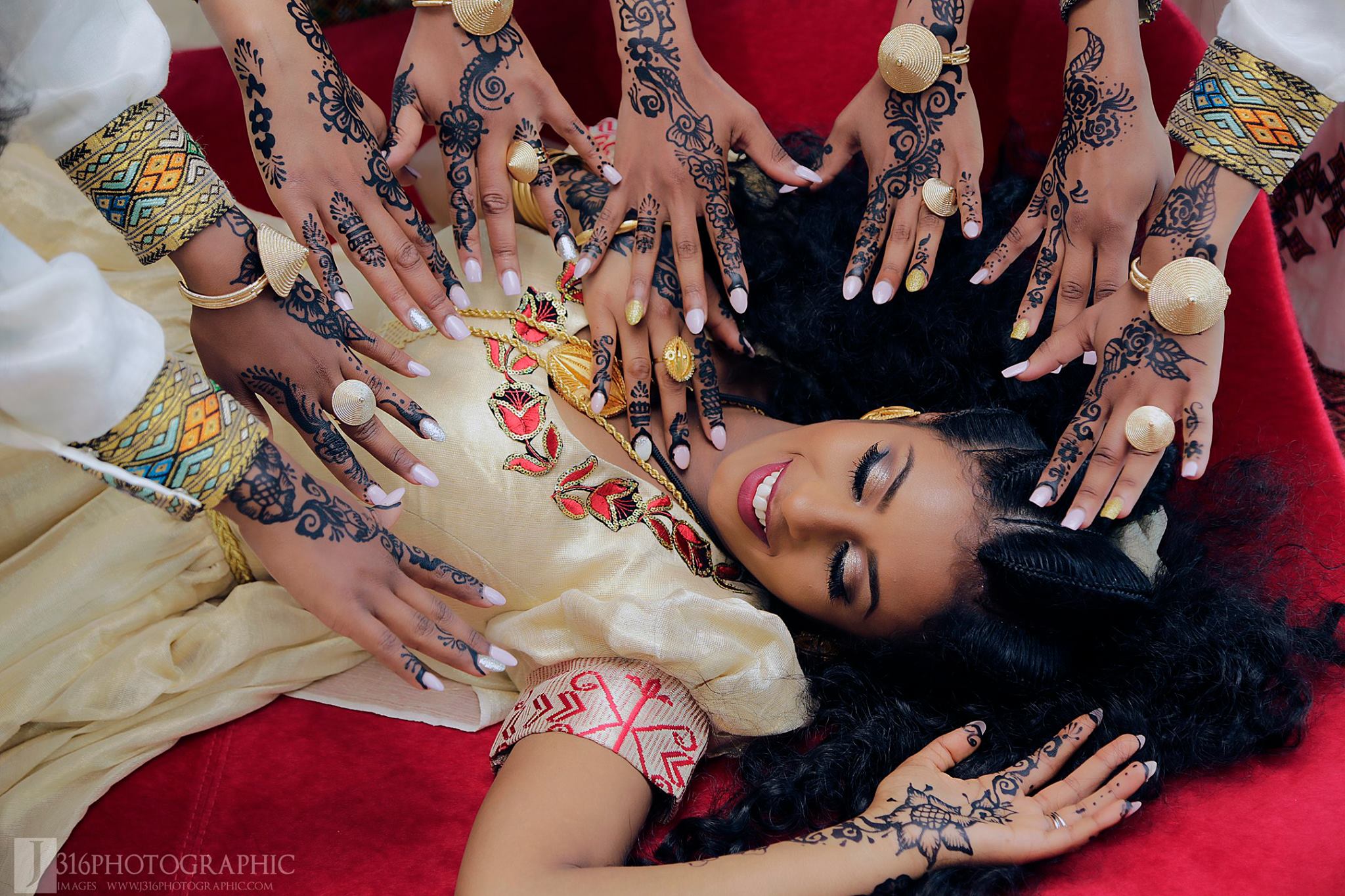|
Henna… a Beautiful Risk?

by Habeshabride Wagahta Andeberhan Imagine this: you are engaged to be married, and planning both your custom and traditional weddings. Every Habesha girl who is or has been married knows this feeling, including me. Planning my traditional wedding reception was one of the best parts of it all- traditional clothing, braids, henna- the works. Henna has long been part of the process- brides get their hands up to their elbows decked out, in addition to their feet and ankles. I can say from personal experience that this is one of the parts many brides look forward to. 
One thing that separates me from other brides is my skin sensitivity and eczema that comes and goes season to season. Because of this, I was hesitant to getting henna for my traditional wedding. I had never had henna done, so I decided to do a test run with the black henna on my wrist before the big day. I was so happy to see that I had no reaction to it. I decided against the traditional red henna because I felt it would not show against my dark skin. So of course I decided to proceed with the black henna on the big day. Little did I know it would still be visible on my skin a year later. Temporary tattoo’s typically last anywhere from a few days to a few weeks. Henna is one of the most popular forms of temporary tattoos. Henna is applied to the skin’s surface, unlike tattoos, which are permanent and injected into the skin. But just because something’s temporary doesn’t mean its risk free. There are two types of henna- traditional and “black henna.” Traditional henna is a reddish-brown coloring made from a flowering plant that grows in tropical and subtropical regions of Africa and Asia. This type of henna requires you to leave it on the skin longer to get better results. The “black henna” is a mix of traditional henna with other ingredients, including phenylenediamine (PPD), a coal-tar hair dye that can cause dangerous skin reactions to some people. By law, PPD is not permitted in cosmetics intended to be applied to the skin. The reactions that some people experience from the black henna can vary from itching, to redness, to more severe reactions such as blisters, raised red lesions, loss of pigmentation, and permanent scarring. 
I am a victim and just one of the many people affected by the “black henna.” One month after my traditional wedding reception, I started to notice itching on my ankles and hand. Following that, I experienced redness and swelling, and noticed that it was outlined and following the exact henna design on my body. From there, I experienced severe skin pigmentation ALL over my body. I was scared and did not know what to do. I finally met with a dermatologist, who was able to prescribe me medication and cream to treat the reactions I was experiencing. Safe to say, the majority of my skin was back to normal about a week later. But the henna design scars have not gone away. I am soon approaching my one year anniversary with the henna tattoo still visible on my body. 
It is important that we educate ourselves and be aware of the benefits and risks of henna. There are several ways to tell whether an artist is using “black henna” versus “traditional henna.” There is no such thing as traditional black henna. True traditional henna paste needs to stay on your skin for several hours or even overnight in order to create a long-lasting design, and the colors vary from orange to a red brown color depending on the individual’s skin. If an artist advises you that you will only need to leave the henna paste on for less than an hour and it is black, they are more than likely using PPD. Human beings have a natural resistance to PPD, and its chemicals break down our natural resistance levels. Some may see the reactions sooner than others, so it is important to keep our eyes open and ears alert. To learn more about the risks of using black henna please see http://www.fda.gov/ForConsumers/ConsumerUpdates/ucm343932.htm
More Photos
|
Venues
Vendors
|




